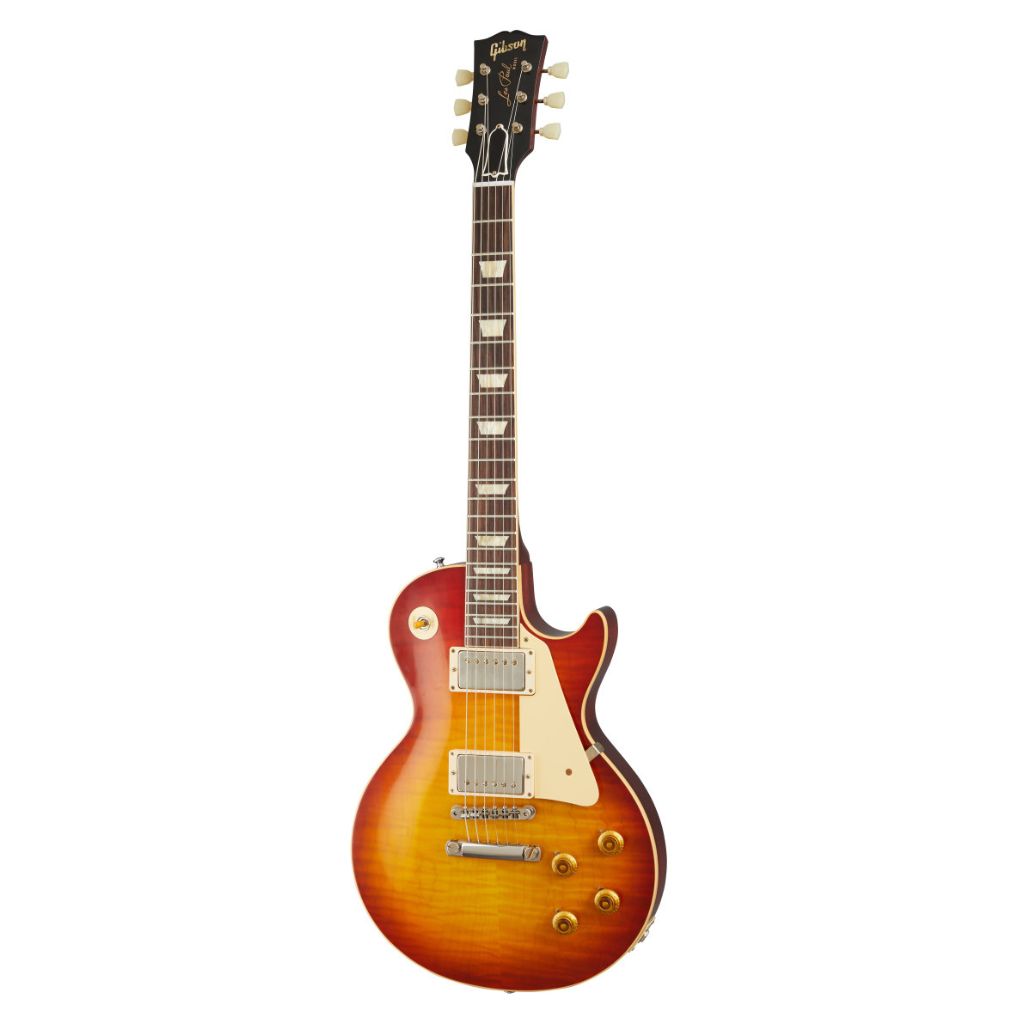The Gear Used by Jimmy Page on ‘Led Zeppelin II’
After using his famous ‘Dragon’ Telecaster on Led Zep’s first album, Jimmy Page mixed everything up for the band’s sophomore record – and created a new blueprint in the process.
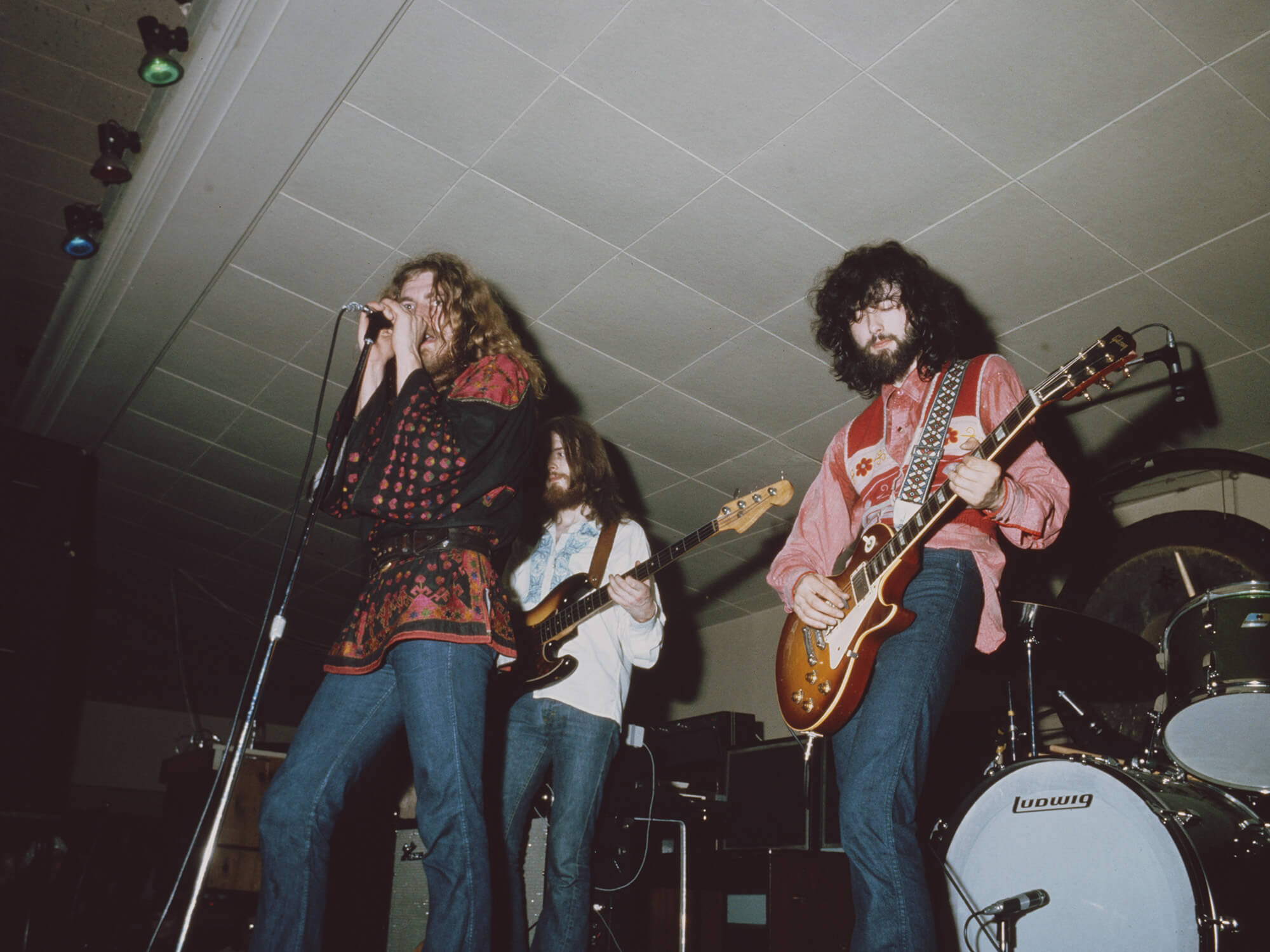
Led Zeppelin performing in 1969. Image: Michael Putland/Getty Images
Led Zeppelin’s debut album featured a Telecaster and a combo amplifier, and that was all it took to redefine the sound of hard rock music forever. In spite of the albums stratospheric success, however, when it came to album two, guitarist and band leader Jimmy Page decided to mix things up again and bring in a bunch of new gear that would go onto carve out an even more iconic place in rock ‘n’ roll history.
The Guitars
For the recording of Led Zeppelin II, Page’s new weapon of choice became a 1959/60 Gibson Les Paul Standard – and what Page would do with this guitar in the coming years is a big part of why a Burst is now one of the “holy grail” guitars for vintage collectors, and will easily fetch half a million dollars at auction.
As Page explained in an Instagram post, he purchased his Burst while on tour at the Fillmore East, from Joe Walsh for “about 1,200 bucks”. He quickly found that the Les Paul’s humbuckers had a much more controllable form of feedback compared to his Telecaster.
“I knew that Les Paul guitars were very user-friendly, insomuch as they put out a lot of level when you plugged them into the amplifier because they had a double-coil pickup, whereas the Telecaster had a single-coil pickup,” he wrote. “With the sort of volume that I now needed to put out in live situations, although I was using controlled feedback, I found that the Telecaster was starting to squeal a bit.
I had to be very careful about where I was standing because of the unsympathetic feedback. With the Les Paul you’d get feedback through the amp and speakers, but you could control it more easily and work with it. You could actually change the literal note and frequency that was coming back on the feedback. I just really enjoyed playing Joe’s guitar, and so I agreed with him that maybe I should buy his Les Paul Standard after all.
I played the Les Paul on Whole Lotta Love and What Is and What Should Never Be and that decided it for me: it was definitely going to be the Les Paul from then on. I always wanted to make a change for each album sonically and that was my first decision for Led Zeppelin II.”
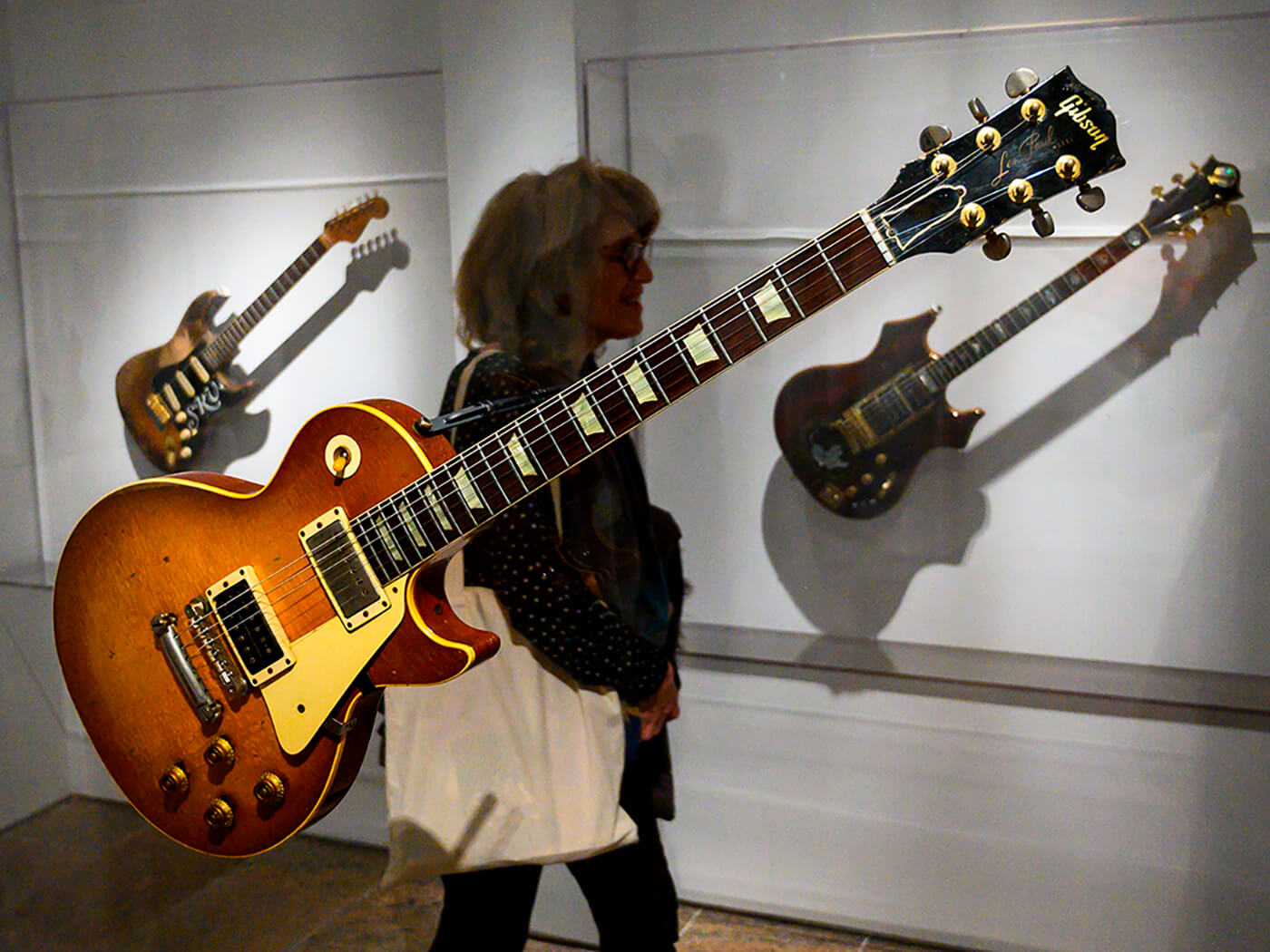
But the Burst was not his first Les Paul – before purchasing his “Number One” Les Paul, Page had a three-pickup Black Beauty Les Paul Custom. That guitar was stolen on the subsequent tour in 1970 in Minneapolis (and recovered many years later). It remains unclear if this guitar was used on the recording of Led Zeppelin II or not, but according to Page, the bulk of it seems to have been recorded on his “Number One”. Later on, in 1973, Page bought a nearly identical 1959 Les Paul, known as “Number 2”. He has also had a few of Les Pauls, including a 1969 model with a B-Bender.
Interestingly, Page’s Number One was not stock when he bought it from Walsh. Walsh had brought the guitar to Virgil Lay of Lay’s Guitars in Akron, Ohio, and had the neck of the guitar shaved down. The pickups were original Seth Lover PAFs, as was stock at the time. That is, until an Australian Tour in 1972 when the bridge pickup failed and was replaced. Jimmy also replaced the Kluson tuning machines with Grovers, which he had become accustomed to from playing his Custom.
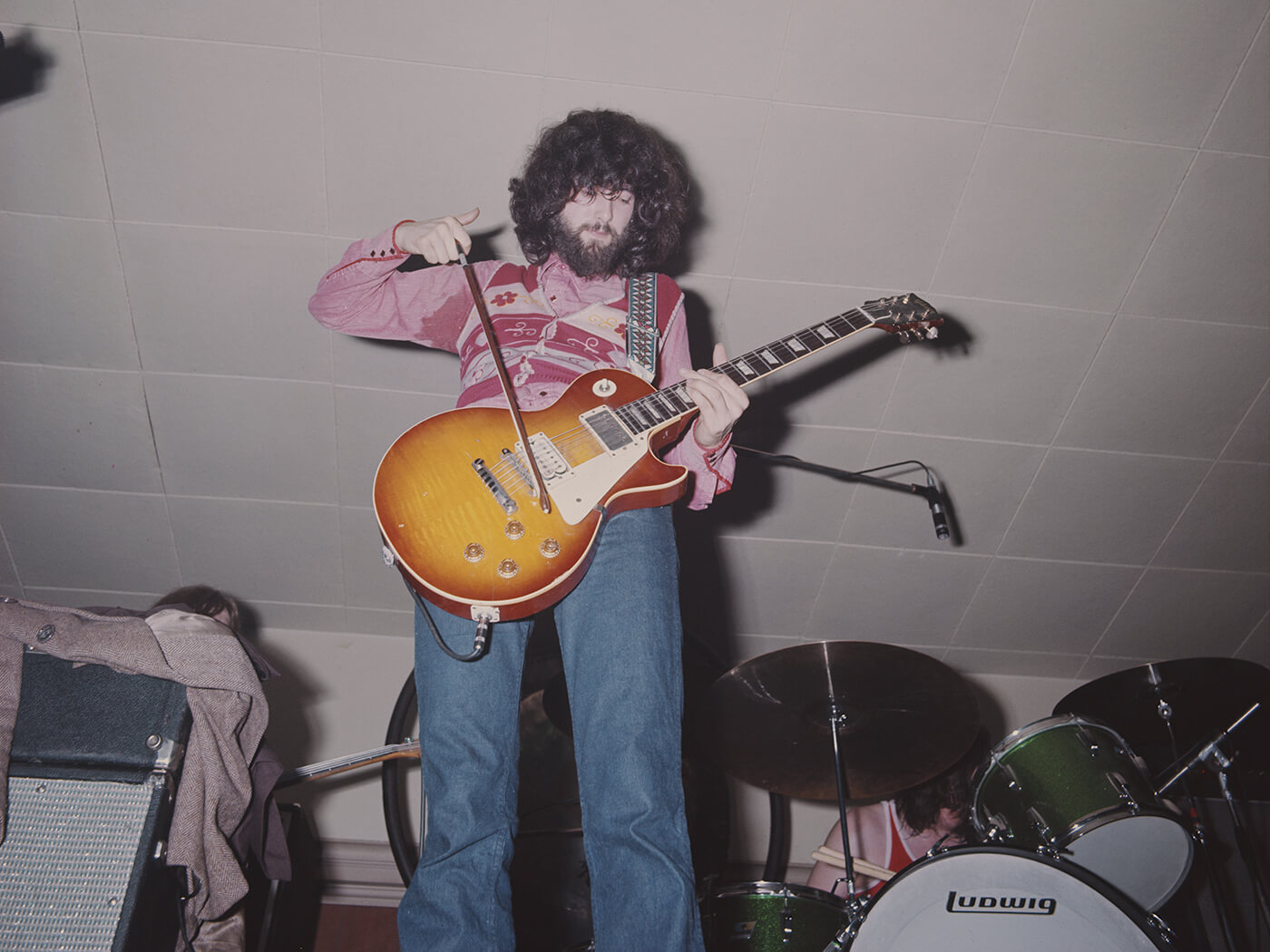
The biggest mystery regarding the guitar is the actual year in which it was made, since the serial number was sanded off during the slimming of the neck and subsequent refinishing, but most experts who have examined the guitar claim that it is a late 1959 or perhaps a VERY early 1960 model. The year 1958 was ruled out when it was found that the bobbins were white on the bridge pickup, as white bobbins didn’t start to be used until 1959.
Other guitars that made an appearance in the studio included a 12-string, as Page explained in an interview with Guitar World in 2014, “I used a Vox 12-string. You can hear the Vox on things like Thank You, and Living Loving Maid.” Specifically, he was referring to his 1967 Vox Phantom XII.
There are also some obvious acoustic parts that one might assume that Page used the same Gibson J-200 he used on the first album, but that guitar belonged to Jim Sullivan and was returned to him after the session. He didn’t get his Harmony Sovereign H-1260 (that was used on Led Zeppelin IV) until 1970 or so. YouTube star and part-time detective, Rick Beato found an old photograph of Page in the studio recording Led Zeppelin II and identified the guitar as a VOX Country Western model. That model did exist back then and it actually had a bolt-on neck, giving the guitar a unique tone, which some would say is something similar to Ramble On.
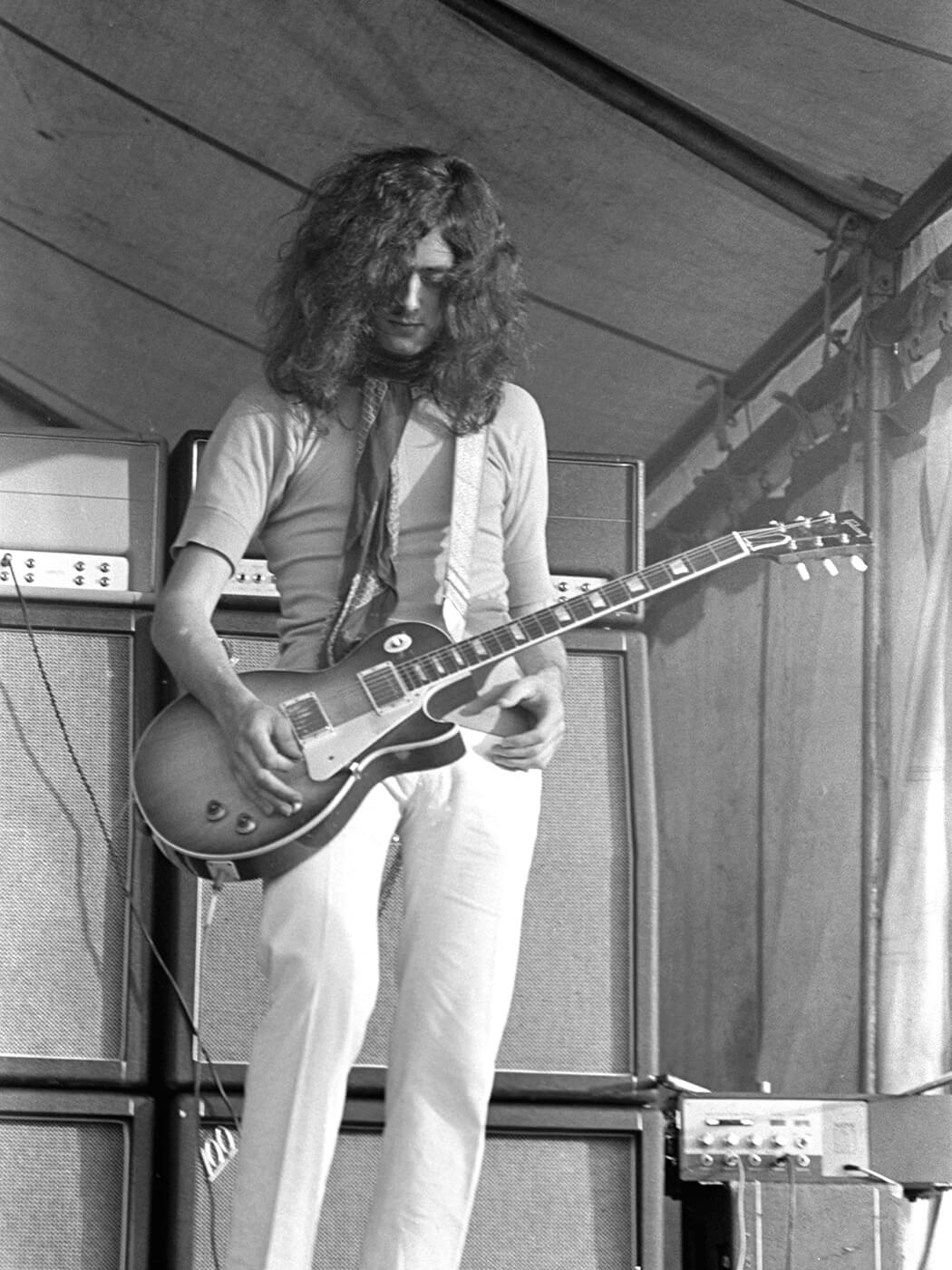
The Amps & Effects
The amp that provided the basis for the tones on Led Zeppelin II was a 1968 Marshall Super Bass that was modded by Tony Frank. The amp’s serial number is SB/A 10053 – the “SB/A” would indicate that it is a 200-watt version of the Super Bass. This amp has been recreated by the folks at Sundragon, the same people who recreated Page’s amp he used on Led Zeppelin’s debut album. As Jimmy Page stated in his press release for the new Sundragon Amp,
“Not only was the volume and tone important but it needed to have enough power to hear the subtlety of various aspects of my guitar playing. I experimented with different amps until hearing about a fellow in the States named Tony Frank, who was modifying Marshall amps. I sent Frank my favourite Marshall, a 1968 Super Bass, and the result was exactly what I was looking for.
Frank’s modification enhanced the amp’s power of the dynamic range. This amp became the main amp for live shows as well as the principal amp I would rely on in the studio for all Led Zeppelin records from Zeppelin II onwards.”
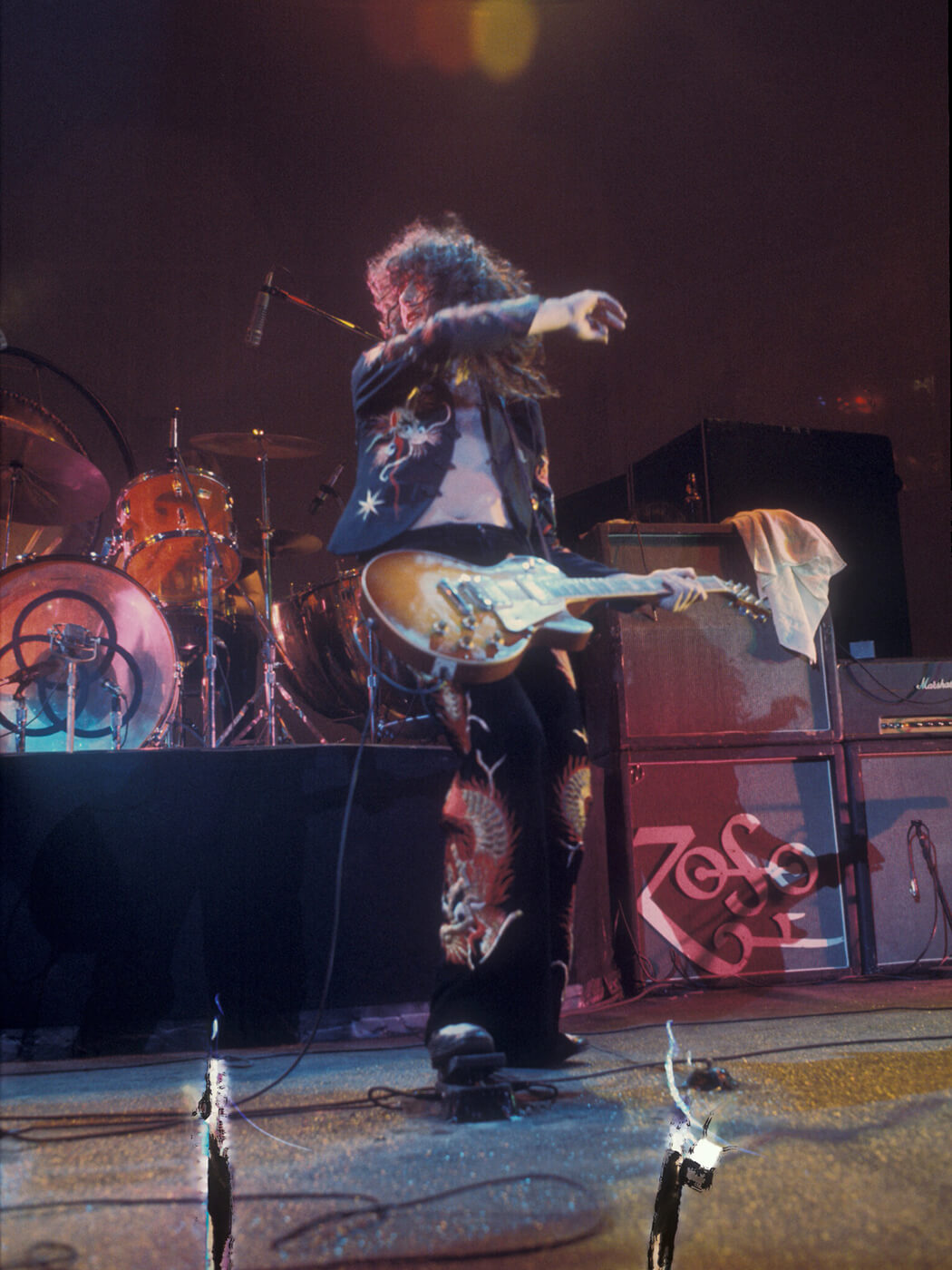
I contacted Sundragon for specifics on the modification, but obviously, they were unwilling to divulge that information. However, the Sundragon amps do have NOS GE 6550 tubes, Iskra and Allen Bradley resistors, and Phillips mustard capacitors, mimicking the original. He was also said to have worked on Jimi Hendrix’s amps as well. The Super Bass wasn’t the only amp used on the album. We know he also used a Vox UL4120 Hybrid amp head in the studio. He had this amp since his time in the Yardbirds.
As for effects in the studio, we know he used a VOX Grey Wah and a newly acquired Vox “Long Tom” Echo Deluxe. He was also seen with a Rotosound Tonebender MK III and a Sola Sound Tonebender MK II during live shows in the months when they were also recording.
Page loved to mix up his gear for every record, but there’s no doubt that on Led Zeppelin II, he set the blueprint for himself and millions of wannabe rockers who would come after him.

